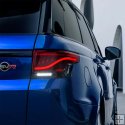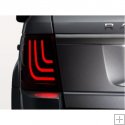General Fitment
Fiberglass
This material is extremely versatile, and DIY friendly which means that products can be fitted and prepared at home but we strongly recommend that all parts be installed by an experienced professional. For a perfect fit, some products or styles may require a degree of trimming and modification. This is mostly due to the manufacturing tolerances of the car to which they are being fitted, and those of the product in question. We aim to sell only high quality products but it should be remembered that many original bumpers have gaps between the bumper and bodywork and whilst these are normally reduced on custom bumpers it may require extra work to get a perfect fit. Some parts such as spoilers may have moulding lines, which will require preparation. Many of our products are made with a glossy Gelcoat finish. This requires sanding prior to painting and therefore scratches and scuffs to this finish whilst initially unsightly do not constitute a fault. Air bubbles in the products, which can occur during manufacture, are kept to an absolute minimum, but you should check carefully around sharp edges and corners when you are sanding the product. Any air bubbles should be thoroughly dug out, and filled with bodyfiller .Polyurethane
Polyurethane products are generally offered with a guarantee of fitment. Each part is designed specifically for your vehicle for an easy fitment and should require no modifications prior to fitting.Initial Preparation - Fiberglass and Polyurethane
- Remove any residual releasing agents left from the moulding process by washing the product with hot soapy water and then cleaning the entire surface with a bodyshop degreaser/anti-silicone wipe. It is important to get rid of any traces of releasing agent which would impair the paint finish.
- The gloss finish on these products is there for the sole purpose of making sanding easier, you have sanded the component enough when the gloss finish is gone and you are left with a matt finish. If any glossy patches remain then the paint will be unlikely to stick properly.
- Sanding should be done using an 80 grit dry sand paper in the first instance, which will sand easily and provide a deep key for the primer, and then with 240 grit wet paper to ensure flatness.
Fitting will vary from component to component, but the general instructions below should give a good indication of the jobs likely.
Bumpers:- Simply hold the bumper in place (a couple of scissor jacks and clamps are normally very helpful), and check around the wings, headlights, grills etc for a consistent gap that is as tight as possible. Repositioning and minor edge trimming is likely to get the best fit possible. Once happy drill through the original mounting hole and secure the bumper with original fixings. When finally fitting the bumper, bed all mounts on sikaflex type adhesive sealer to reduce the effects of vibration.
Sideskirts:- Skirts are normally fixed into the sills at either end, and bedded on sikaflex all along the car. The key to making the skirt look good is accurate sanding along the top edge that is in contact with the car to match the profile. The sealer will hide minor inaccuracies when the skirt is finally fitted. Some skirts also fix from below.
Boot Spoilers:- Most boot spoilers are very simple to fit simply hold them in position and drill through into the legs from below to mount. Use at least 2 and possibly 3 self-tapping screws in each leg. When finally fitted, bed the legs on the gaskets provided or use sikaflex to avoid any vibrations causing the fixings to come loose.
Rear Screen Spoilers:- These are normally bolted onto the glass through existing holes or bonded onto the rear screen using sikaflex. If bonding, absolute cleanliness is most important and the car needs to stand for a minimum of 12 hours after fitting to allow the adhesive to cure properly.
Arches/Wings:- Arches and wings vary so much in design that specific instructions are more difficult to issue. Wide arches normally have to be bonded on. This involves "dry" fitting the product, lining it up with surrounding panels, and drilling all fixing holes. Only when absolutely sure that all items line up are fixings drilled and you must be absolutely sure before you start bonding once you start you are committed. Many other arches can be fitted without bonding but most look best if they are bonded on.
Bonding
Painting
Fiberglass
Most bodyshops use a 2 pack product and that is the best for fibreglass. Many 2-pack primers are suitable for use with a well sanded and prepared fiberglass and these are the primers to use YOU NEED NO SPECIAL PRODUCTS TO PAINT FIBREGLASS. It is not necessary to use plasticisers and adhesion promoters for fiberglass provided the products are PROPERLY prepared.Oven Curing
- Temperature no higher than 40°C
- Bake the product for 30 minutes prior to priming so that any pin holes/air pockets break open before it is painted careful inspection is needed after initial baking.
- Bake for no longer than 30 minutes








